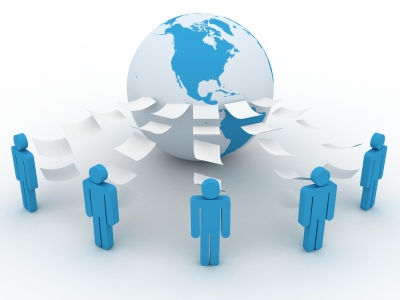Email Security
From Computing and Software Wiki
Email Security is to ensure that no unauthorized person has access to your email account, you know the sender of the email and you can send and receive emails. Email Security is needed to protect the computer from threats and to ensure that you do not send or receive hidden malware within the email or attachment that can damage your computer system, data and records. On the other hand you can be held responsible for any damage to a third party, if you unintentionally end up sending a malware within the email.
Contents |
How to make Email secure?
There are several things to keep in mind while sending and receiving emails.
- When someone sends an email message, it does not go directly to recipient mailbox. The Internet Service Provider stores the copies of all email messages on its mail server before it delivers them. All the information kept on the servers can be easily accessed by the Administrator, so try not to send private and important information through email or if you do make sure you encrypt it.
- When you send an email to a number of people, the recipients can see each other’s email addresses. It is a good practice to use Bcc (blind carbon copy) to enter email addresses of the recipients, so that email addresses do not appear in the message. The email addresses listed in To and CC fields appear in the email message and every recipient can see all To and Cc recipients, but cannot see Bcc recipients.
- Try not to send personal messages from work or with the company account to ensure privacy. Also do not use your personal email to send any information/data regarding your company, that way you are risking company’s security. Always use company’s email for this purpose. Do not give your company's email account to everyone, only company's employees and close family members should know that account.
- Avoid forwarding email messages, but if you still want to forward email be careful while doing so. Before forwarding email to your list of friends make sure you delete the previously listed emails, that way you will save bunch of email users from getting spammed, in case a spammer gets hold of email addresses.
- Be careful while writing and sending emails, the emails can reside in email box for years. *If you are getting emails from some unknown group to which you have not subscribe, do not try to unsubscribe that way you might end up getting more emails from that group, instead add that email address to your block list.
- Install antivirus on your computer and run it regularly, some viruses take addresses from the contact list and send spams in your name. Try to minimize the receipt of spams by setting the junk email filter and blocking unknown senders.
Email Security Threats
The email may contain content that can affect your security and privacy. The most common threats to email security are discussed below.
Malware
Malware is short for "malicious software", it is a software/program that can damage a computer system, server, or a computer network without the knowledge of the owner. Malware can affect the computer system by deleting or corrupting the data/files on the local disks. It includes viruses that can destroy the computer system, and spywares that can steal personal information.
Spyware
Spyware is a software that is installed on the computer without the knowledge of the owner, it monitors the user's activities. It collects personal information, like sites that a user has visited, personal data such as email address, password and credit card details, it can also change the computer settings. It uses the memory and system resources which results in slow performance of the computer system. The unwanted behavior of the computer system, poor system performance and slow internet connection are the clear signs that indicates that the computer is infected with a spyware. Spyware can be removed by running anti-spyware software on the infected computer.
Virus
A computer virus is another kind of malware. Computer virus is a software which is installed on a computer system without owner's permission and corrupts data on the computer system. It can transfer from one computer to another. Computer viruses can be easily downloaded on the machine with the attachment in email. The symptoms of a computer infected with a virus is a slow system performance and unwanted behavior of a computer system. Viruses can be removed by running antivirus software on the infected computer.
Phishing
Phishing is a method to steal personal information like passwords, credit card details, and bank account numbers etc. The most common way of stealing personal information is a link sent through an email which directs the user to a fake website, that site ask the user to enter the personal information. This kind of website is only set up to steal the user's information. To avoid phishing attacks, be careful while entering personal information over the internet.
Spam
Spam is a unwanted or junk e-mail sent to multiple email addresses mostly for commercial purposes. Some companies send emails to a collection of e-mail addresses to promote a product or service. The spammers can collect email addresses by using different kind of programs which collects the e-mail addresses and add them to spamming lists. Spams can be avoided by setting the junk e-mail filter, blocking the unknown senders or by using the anti-spam software.

